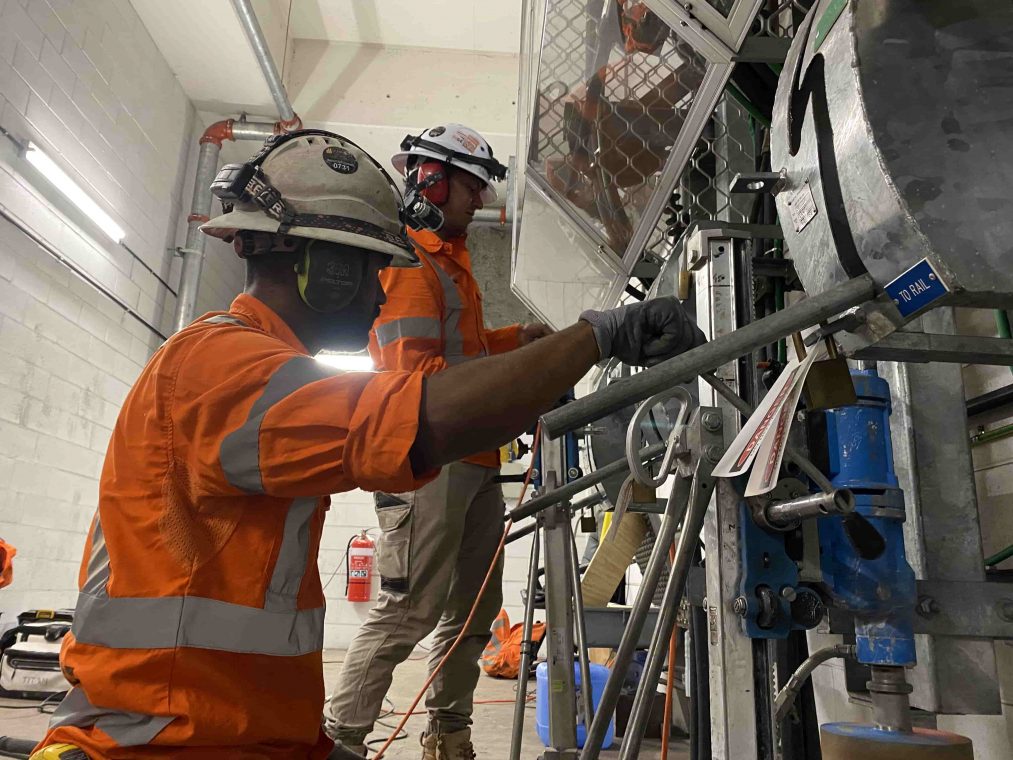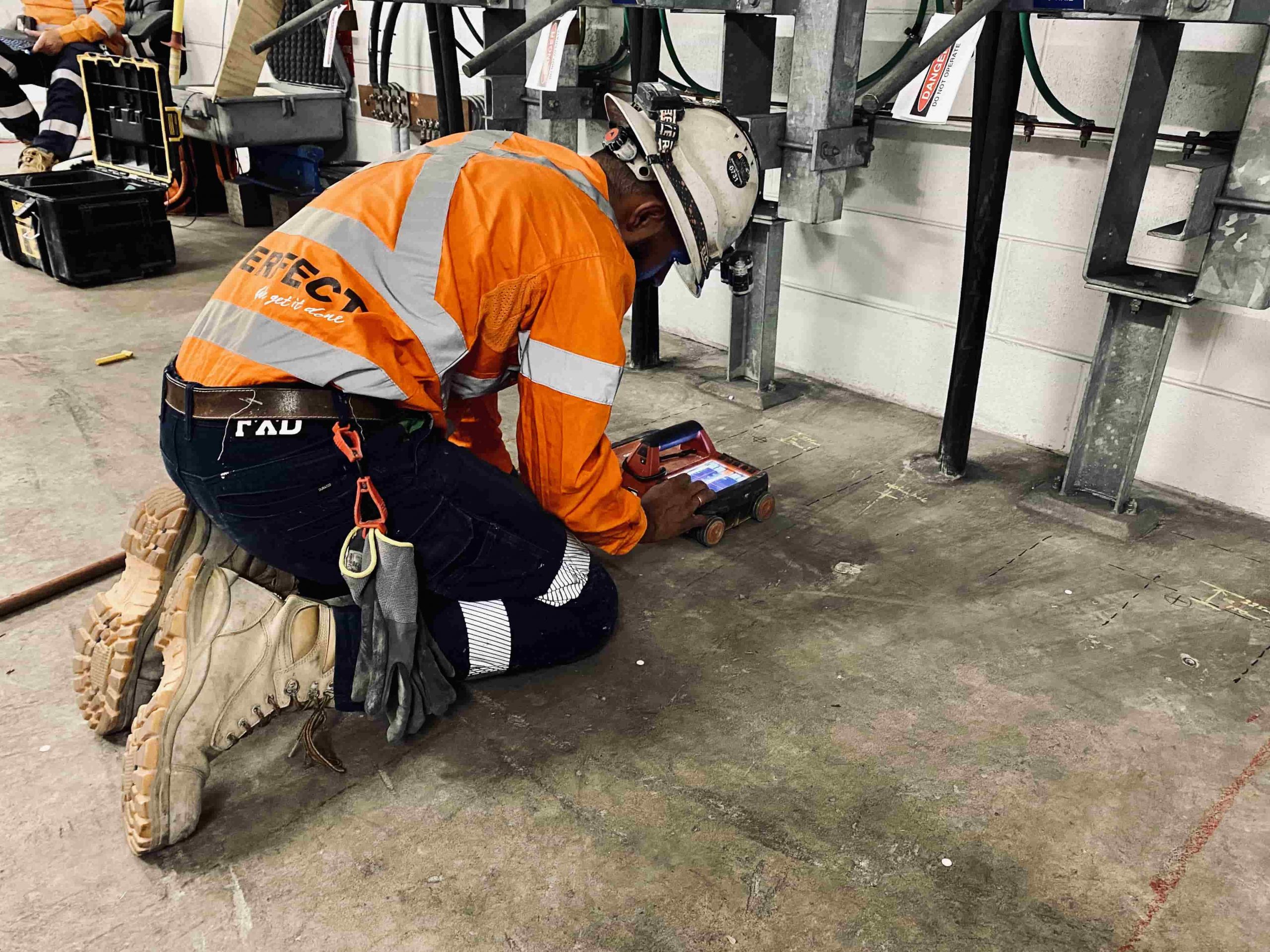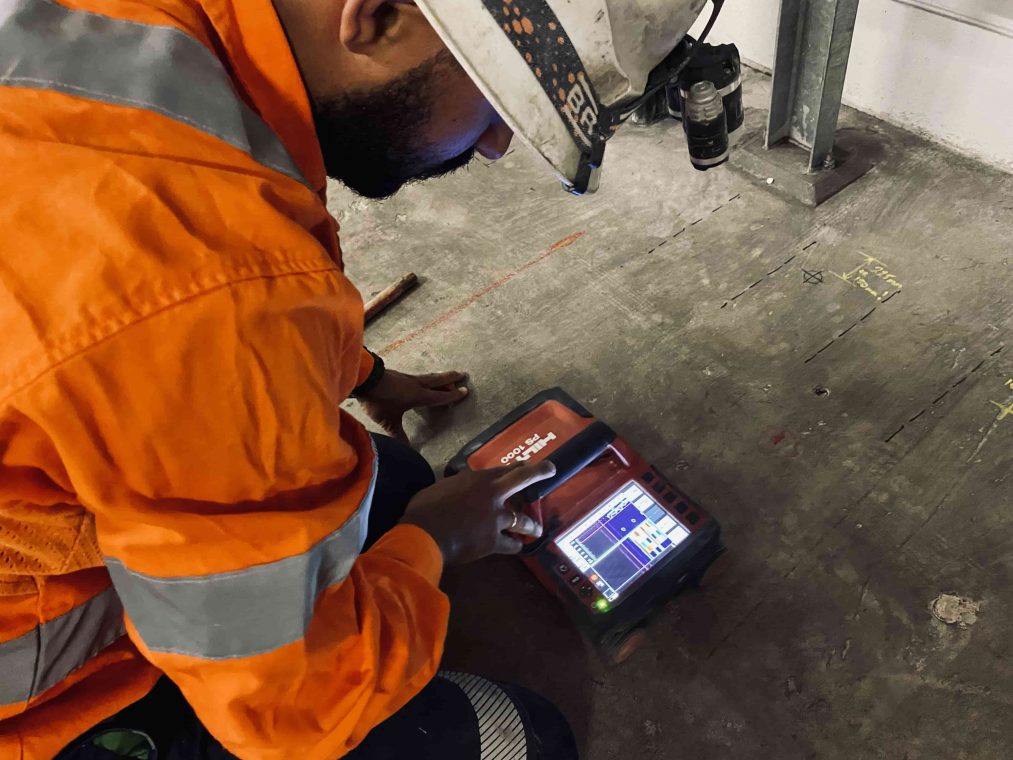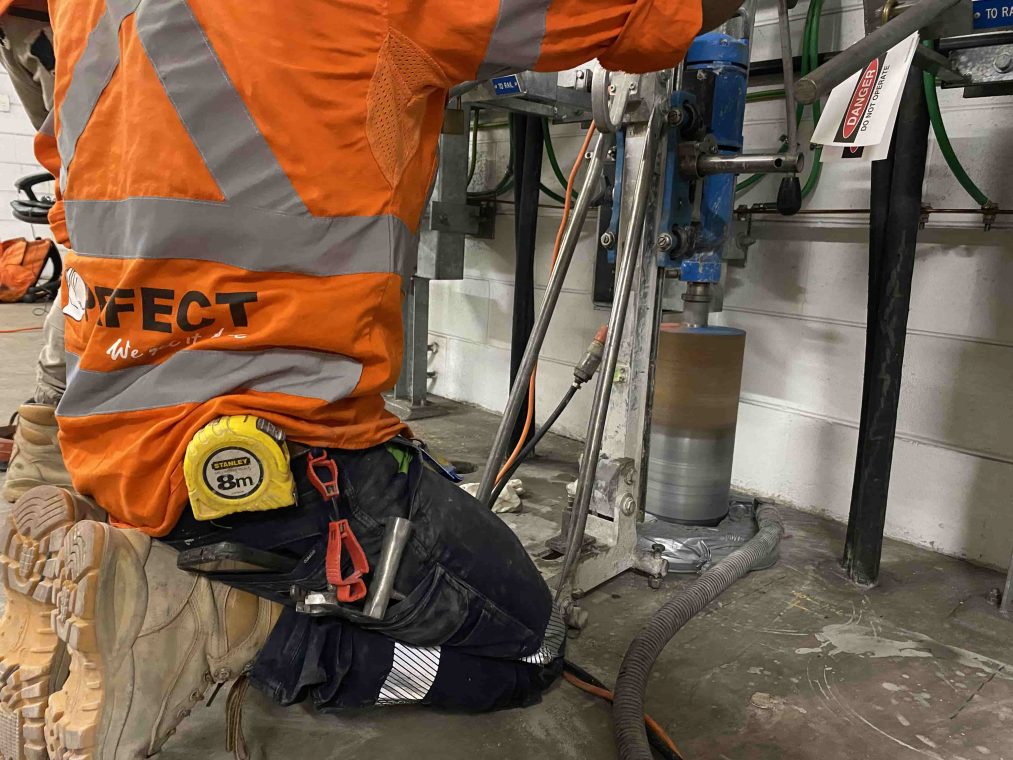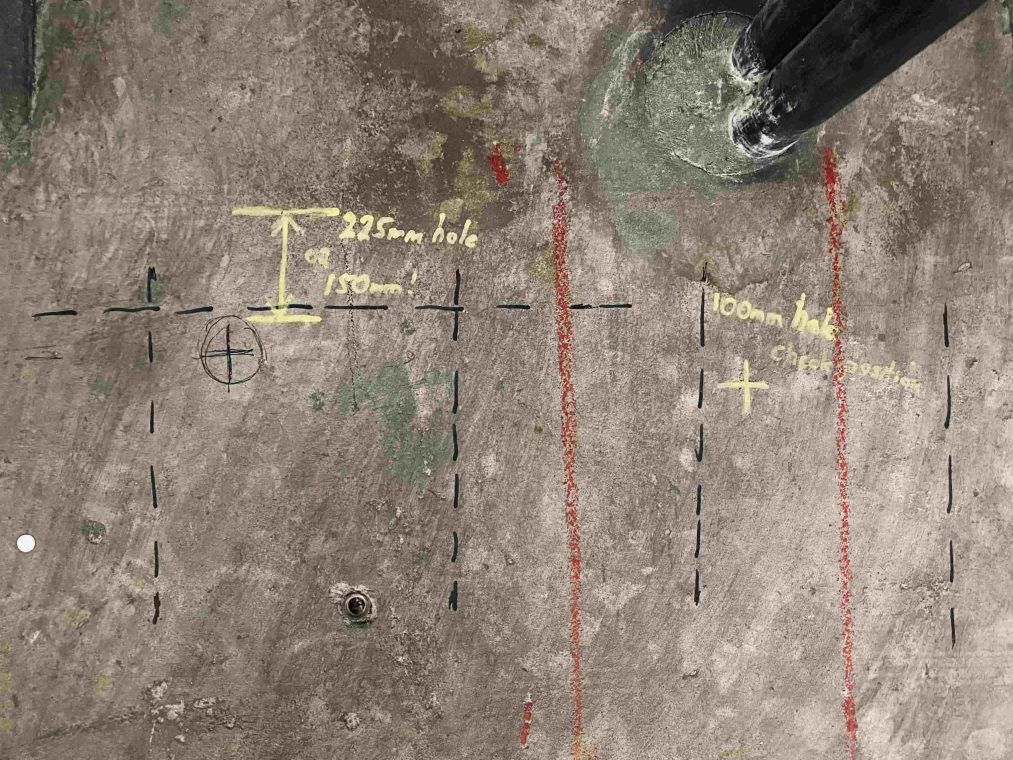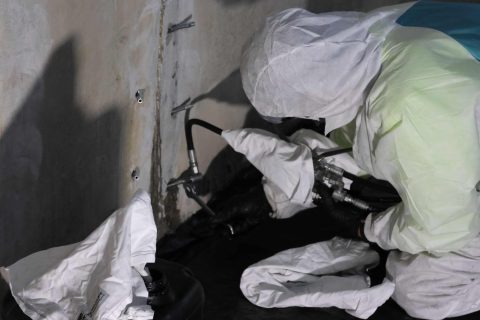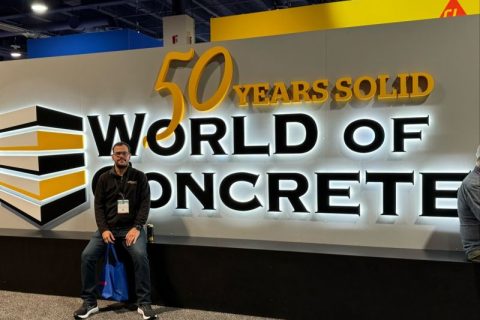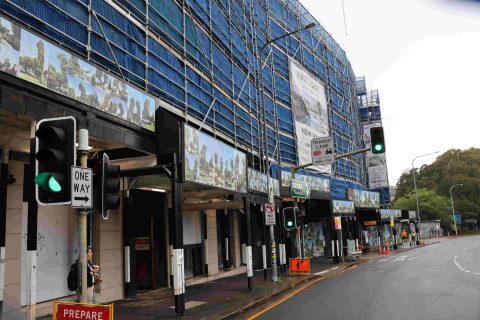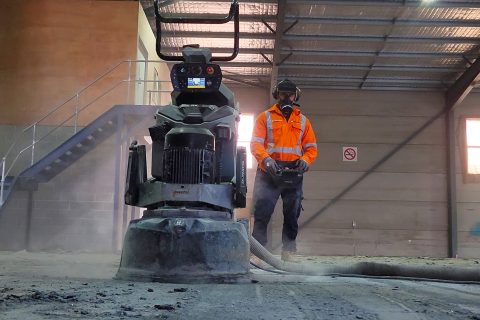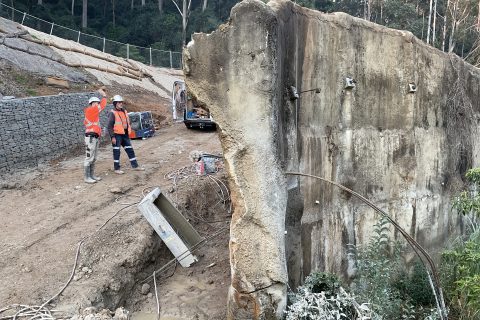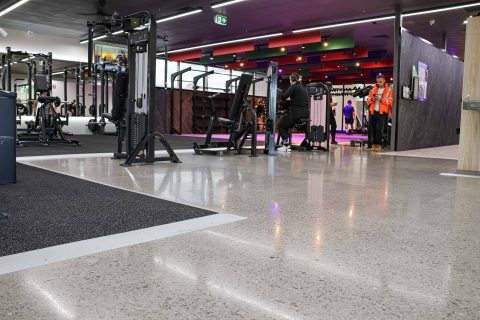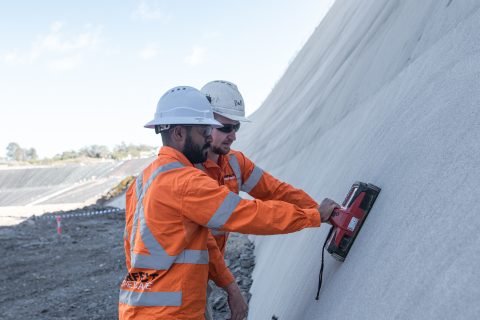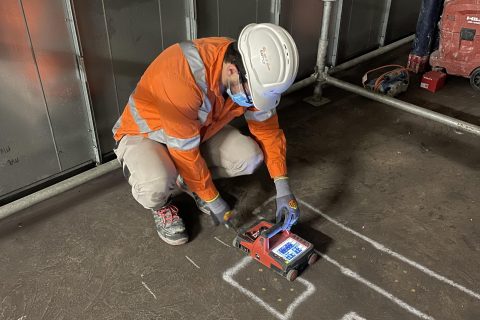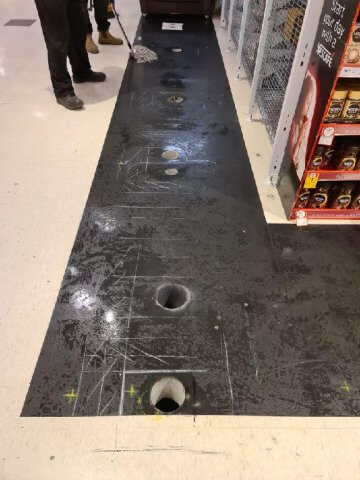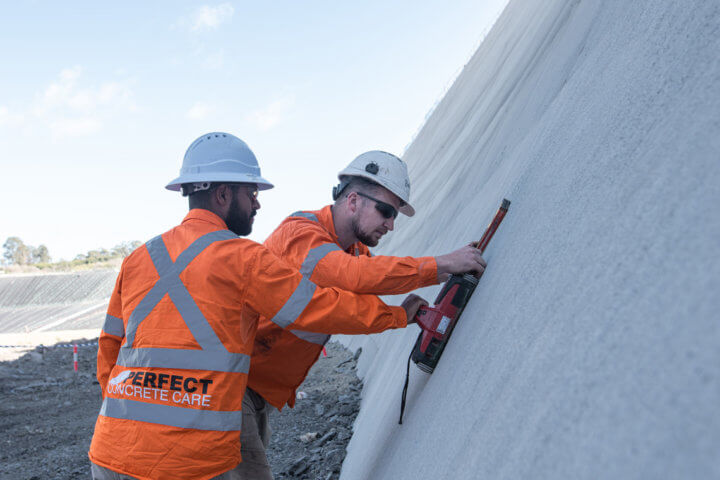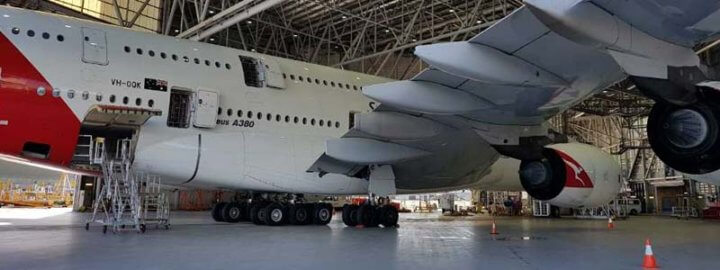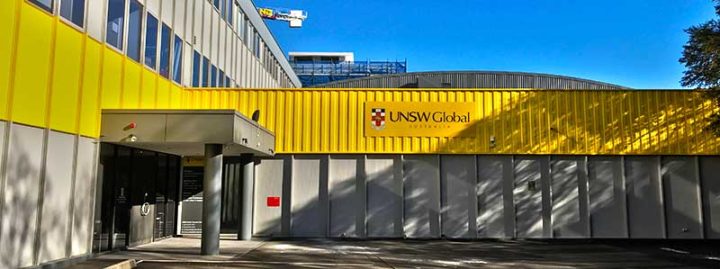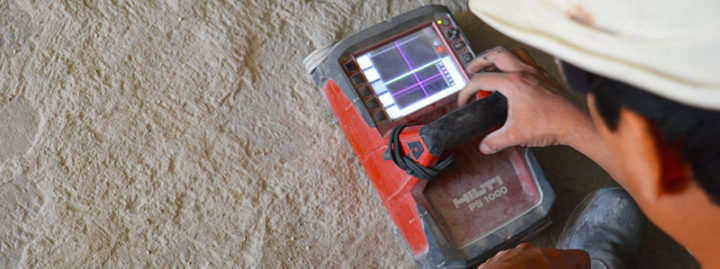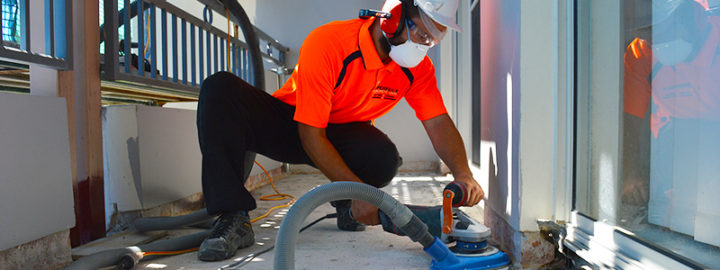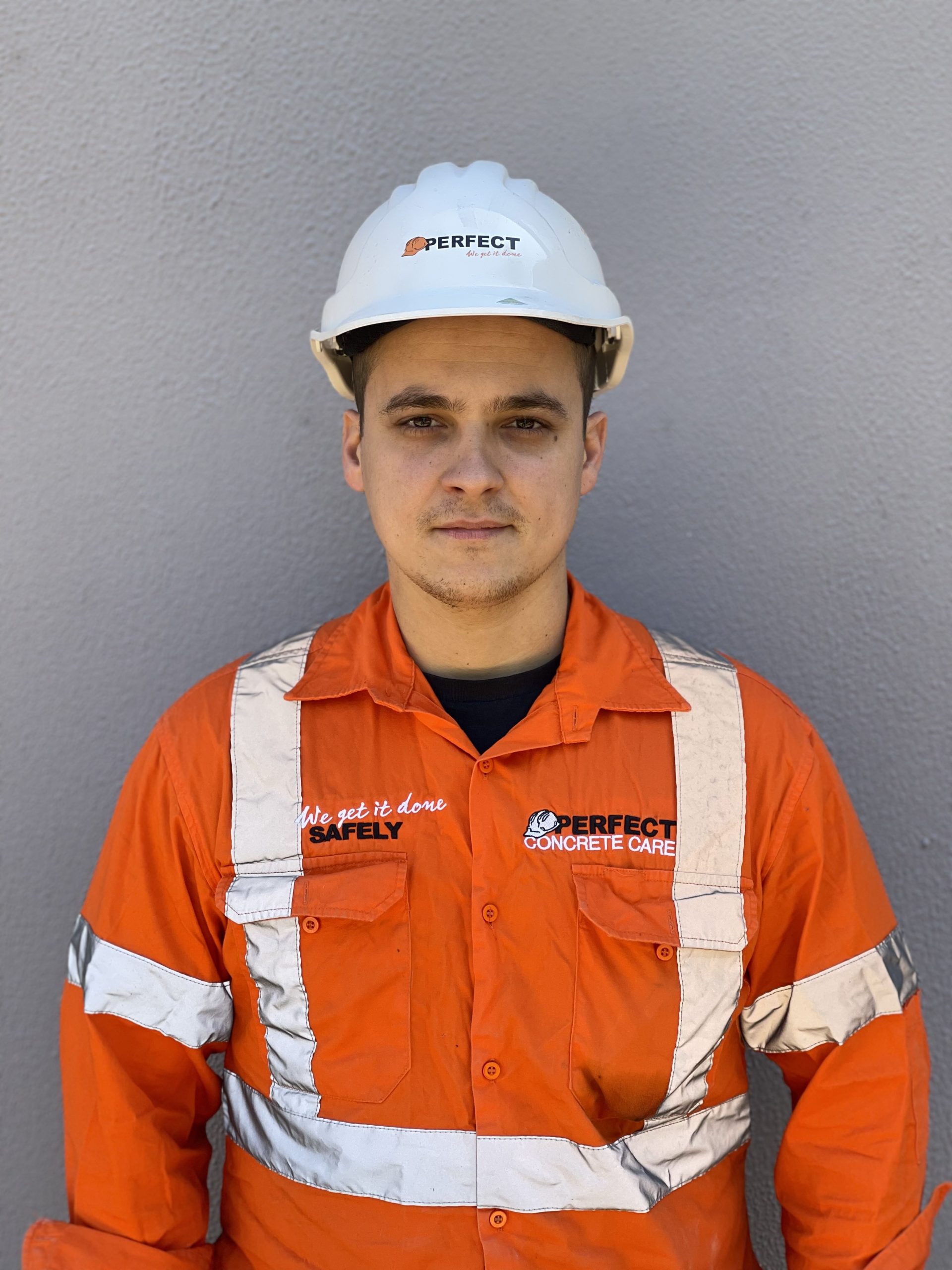by Daniel Green
Recently, during a tier one rail possession, I was privy to my first concrete scanning experience. I was merely labouring through Perfect Hire but Perfect Concrete Care had been contracted to core a dozen holes in the switching hut at an inner city train station. The hut contained the master switches [big, long handled levers just like in the movies] for the 1500v supply and was located directly above the rail line. The builder had plans to run the 1500’s through our core holes on a future possession but wanted to get the jump on it before Christmas.
PCC had sent Lucas Santos and Nelson Gallo, Lucas being one of the most senior operators in the Perfect stable. Always smiling, Lucas is the epitome of a professional and we’re damn lucky to have him. In addition to the core holes, PCC’s SoW included scanning for services. Given the sheer voltage running through that room it was a prudent decision by all parties.
Lucas sat the Hilti scanner on the deck, and with the push of a few buttons and some sweeps of the slab he had determined what he believed to be safe and good coring ground. It sounds simple right? Press a few buttons, roll the thing side to side and hook in with the Tyrolit. But there’s a lot more to it than that.
The Concrete Scanning Tech Itself
Concrete scanning uses a technology known as Ground Penetrating Radar. Also known as non-destructive imaging, it uses electromagnetic radiation pulses to image the subsurface. Essentially it sends a series of UHF signals into the material which bounces off any buried objects and is recaptured by the scanner. The signals are processed by the on-board computer and then formulated into viewable data. Depending on the machine, the data can be displayed in a number of ways including plan view & cross-sectional mapping. Keep in mind this is all completely live. To break it down into simpler terms, when you roll the scanner across the floor you can see buried objects on the screen as the scanner moves. It’s a pretty neat trick.
Scanning isn’t magnetic, so it doesn’t find only ferrous metals. It finds anything that doesn’t match the consistency of the material around it. It will detect conduit, mesh, PTT cables, pipes, reo, slab thickness and voids. And scanning isn’t restricted to only concrete. You can also scan asphalt, rock, soil, ice and even water. Anything with enough density to allow the GPR to read it.
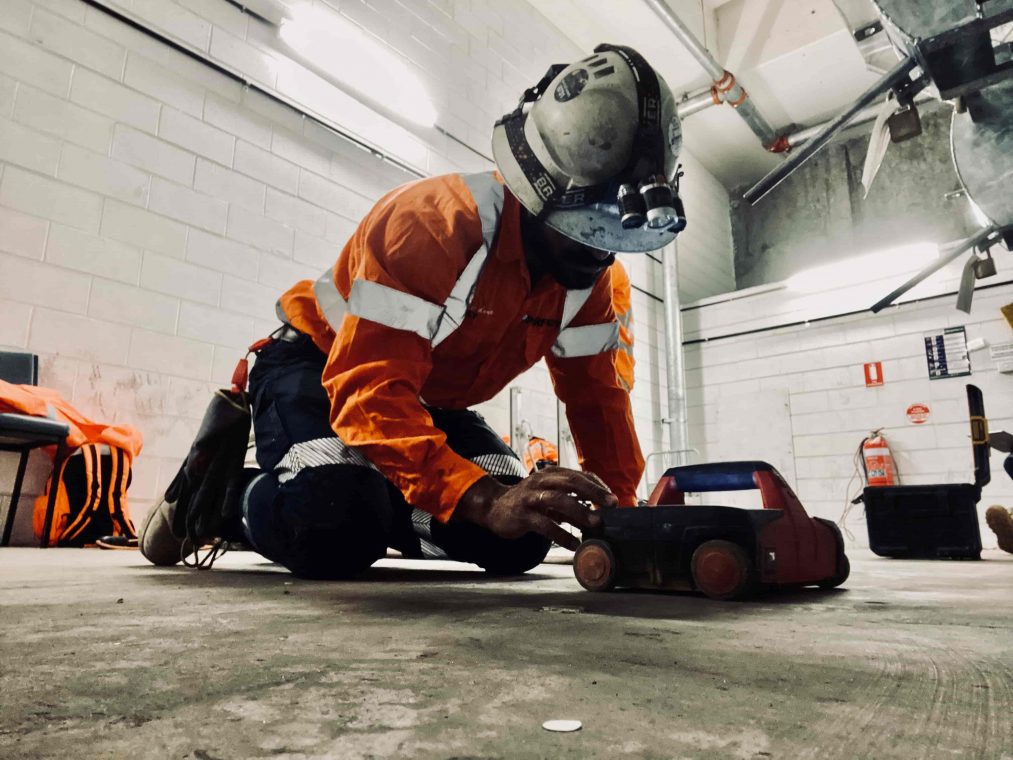
Six Reasons Why You Should Concrete Scan
So why should you scan? Well, other than the obvious, here’s six reasons why scanning will not only save you money, it may even make you money.
1. The analysis of older structures where plans are unavailable.
Only in the last few decades have there been more strict governing around council retention of building plans. Even then, it depends on which council it is and their record keeping system. No entity is flawless operation throughout its entire history and sometimes things just get missed.
In short: GPR can bridge the gaps between a lack of building plans, bringing you up to speed on the location of subsurface objects prior to penetration.
2. The retention of structural integrity.
Let’s say you need to core a hole through a wall slab for a future HVAC install. Except the location has the engineer in knots because its cutting the structural integrity of the wall a bit fine. He’s concerned you’ll wipe out a nice fat piece of reo or two. Scanning will allow you to locate the reinforcement and core without altering the original design too much. For the sake of five minutes and a few mm everyone gets to walk away happy.
In short: GPR can retain strength better than just guess work.
3. The prevention of ugly and costly errors.
Unfortunately, slabs contain more unknowns than knowns. Fortunately, much regulation has controlled the industry, bringing those unknowns out of the darkness and into the light. However, surprises still lurk and can up and sting you when you least expect it. Surprises that prevent full penetration of saw blades, core barrels and even masonry bits. And if your finish work can’t be completed because of a nasty subsurface surprise, relocating it could mean unsightly and expensive repairs.
In short: GPR can mean you get it right the first time.
4. Safety.
Scanning will locate anything up to 300mm deep. Given the average floor slab is 250mm, a healthy scan should find any buried services long before your demo saw or core barrel does.
In short: GPR can save lives.
5. Rectification works.
If you haven’t hit services you haven’t been on the tools long enough – like it or not everyone has hit them. Thankfully, it primarily ends up with asset damage. Depending on how your contract is laid out, the rectification of those assets could fall on you, a potentially expensive outcome.
In short: GPR can prevent rectification works through human error.
6. Downtime, costs, delays, loss of work.
Not to get too dramatic but the flow on effects from hitting services can be mighty expensive.
- While you’re sorting out your rectification repairs you’re not working and earning.
- There will be additional repair costs in materials and tradespeople to fix them, assuming that you can’t.
- You’re potentially delaying other aspects of construction including other tradespeople.
- If it’s bad enough, they may not ask you back.
In short: not using GPR can cost you in ways you can’t even imagine.
But How Can It Make You Money?
By being that contractor who never hits services because you’re 100% sure there is none. There’s an old phrase: you can’t keep excellence down. SO be excellent and watch your reputation grow!
Perfect Concrete Care is Sydney premier concrete services specialist in coring, grinding, patching, cutting and scanning. We have over a dozen vans running around Sydney fully kitted out with every concrete care tool imaginable including a GPR scanner. Before a single cut is made we can make a GPR pass without you needing to call a seperate contractor.
For more information on our scanning and other services, contact Jaro on 0414 902 112.
